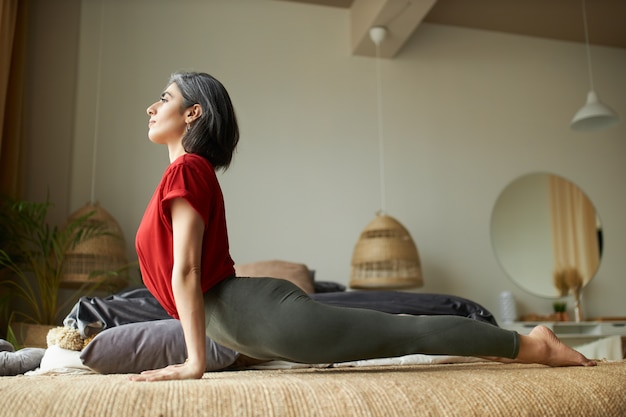
A yoga body isn’t just flexible; it can also boost your memory, heart, and bone health. In the UK alone, people are spending £790 million a year on yoga classes and gear. Along with some innovative and unusual styles of yoga, like paddle-board yoga or dog yoga, science continues to validate the real benefits of this ancient practice.
Researchers from UCLA discovered that a three-month yoga and meditation course was more effective at minimizing age-related brain impairment than standard memory exercises. This same course also improved sleep in breast cancer survivors. When Lucy Edge, a former advertising executive, fell into depression, she turned to yoga and experienced significant mental health benefits. Lucy has since written books on yoga and compiled over 300 studies on its health benefits.
Yoga can be a powerful tool for improving your memory. A study involving 25 adults over 55 years old found that 12 weeks of yoga and meditation not only improved their memory but also reduced depression and anxiety. While more research is needed, these findings suggest that yoga and meditation can be excellent for maintaining brain health as we age.
Even if you don’t spend hours doing headstands, you can still benefit from yoga. In the memory study, participants did one hour of Kundalini yoga per week, which involves gentle postures combined with breathing techniques and chanting. They also practiced Kirtan Kriya, a 20-minute meditation involving chanting, hand movements, and visualization.
For heart health, yoga can be just as effective as conventional exercise. A 2014 review showed that yoga helps lower the risk of heart disease. Stress, a major contributor to heart disease, can be managed through yoga, which helps regulate stress hormones, thereby lowering blood pressure and heart rate.
Beginner-friendly yoga poses to reduce stress are available in Charlotte Watts’ book, “The De-Stress Effect.” Restorative yoga, where you support postures on bolsters and cushions for up to 12 minutes, is another great way to alleviate stress.
For back pain, yoga has shown remarkable results. An 87 percent reduction in pain was reported by participants in a primary care trust’s rehabilitation program developed by physiotherapist and yoga teacher Sarah Shone. NICE guidelines recommend yoga and stretching for lower back pain, and Shone suggests informing your instructor about any health issues and starting with gentler styles like Hatha or Iyengar yoga.
Moreover, yoga can help with incontinence by strengthening pelvic floor muscles and increasing bone density due to its weight-bearing nature. Always consult a doctor if you have specific health conditions and consider whether you qualify for subsidized yoga classes under an exercise referral scheme.
Choosing the right yoga mat is also essential. Consider the location where you’ll use it and whether you need to carry it often. A thicker mat is recommended to protect your joints during practice. Healthista recommends the Elephant Cork Yoga Mat from Valka Yoga, which is eco-friendly, durable, and provides ample joint protection.
On top of that, using yoga blocks can assist in performing challenging poses. The matching Elephant Cork Yoga Block from Valka Yoga is beneficial for stability and grip.
For beginners, picking the right yoga class is crucial. Yin or Restorative yoga is very gentle, usually held under candlelight with lots of support. Vinyasa Flow links postures in a sequence, while Iyengar focuses on alignment and is great for newcomers due to its use of props. Anusara yoga combines alignment with flowing movements to uplifting music, and Yoga Therapy aims to heal specific injuries or illnesses.
Regardless of your current flexibility, yoga comes with a host of benefits that cater to everyone, making it an increasingly popular and scientifically endorsed practice for enhancing overall health.